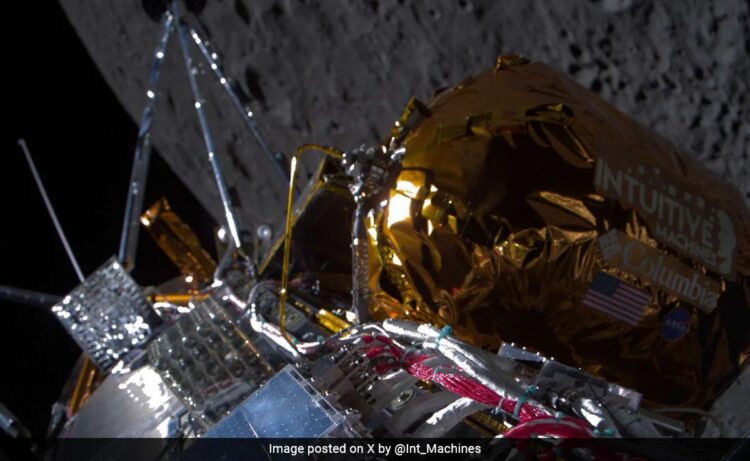In a historic achievement, a Houston-based company has successfully landed the first American spaceship on the Moon in over 50 years. The accomplishment is part of a new fleet of NASA-funded, uncrewed commercial robots aimed at paving the way for future astronaut missions later in this decade.
Flight controllers confirmed the receipt of a faint signal after the hexagon-shaped vessel, named Odysseus and built by Intuitive Machines, touched down near the lunar south pole at 2323 GMT. However, there is uncertainty regarding its full functionality, with live stream announcers suggesting a possible off-kilter landing.
The descent, slowed from a speed of 4,000 miles (6,500 kilometers) per hour, was captured by an external “EagleCam,” and images from its final seconds of descent may be released soon.
Tim Crain, Chief Technology Officer of Intuitive Machines, stated, “Without a doubt, our equipment is on the surface of the Moon and we are transmitting. So congratulations IM team, we’ll see how much more we can get from that.”
This success follows a recent moonshot failure by another American company, intensifying the pressure to demonstrate the capabilities of the private industry in achieving a feat last accomplished by NASA during the Apollo 17 mission in 1972.
The current mission is crucial for exploring the lunar south pole’s environmental conditions, providing valuable insights into factors such as dust composition, temperature variations, and radiation levels. NASA’s Joel Kearns emphasized the importance of gathering this information before sending human explorers to the region.
Odysseus, launched on February 15 via a SpaceX Falcon 9 rocket, features a new supercooled liquid oxygen and liquid methane propulsion system. Its landing site, Malapert A, is a lunar impact crater located 300 kilometers (180 miles) from the south pole. NASA envisions establishing a long-term presence there and extracting resources like ice for drinking water and rocket fuel under the Artemis program.
Odysseus carries various instruments, including cameras to study lunar surface changes caused by spaceship engine plumes, a device to analyze charged dust particles, and a NASA landing system utilizing laser pulses for precise navigation.
The landing was not without challenges, as Odysseus had to rely on the backup navigation system for the entire descent phase due to a malfunction in its primary system. This demonstrates the complexity and unpredictability of lunar missions, where precise navigation is critical for a safe landing.
Intuitive Machines’ partnership with private clients contributed additional cargo to the mission, including stainless steel mini Moons by artist Jeff Koons and an archive by a nonprofit aiming to preserve human knowledge across the solar system.
NASA’s investment of $118 million in Intuitive Machines under the Commercial Lunar Payload Services (CLPS) initiative reflects the agency’s commitment to leveraging the private sector for lunar cargo services, stimulating a broader lunar economy. While this success marks a significant milestone, the challenges of lunar landings, with over half of attempted missions ending in failure, highlight the difficulties of navigating the Moon’s hazardous terrain without an atmosphere to support traditional landing methods.

















Comments